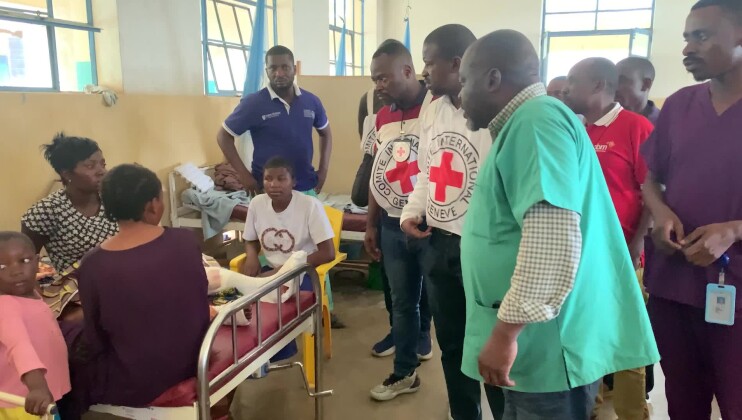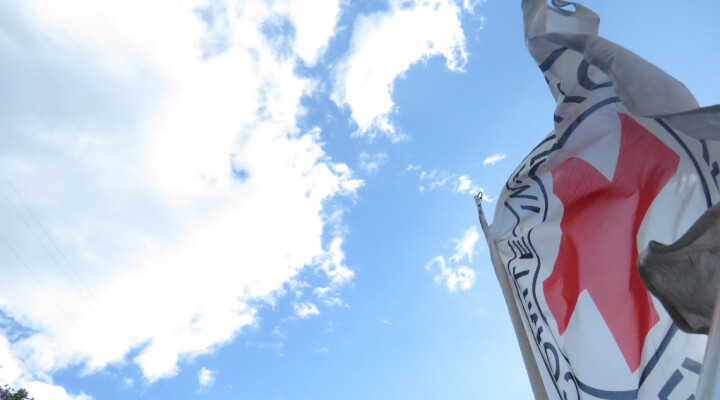Raqqa, Syria: Tens of thousands face harrowing living conditions after fleeing fighting
BACKGROUND
While hundreds of thousands have managed to escape Raqqa city since April 2017 (205,000 people according to the UN), the fate of tens of thousands of civilians trapped in Raqqa city remains unknown.
The reports coming out of the city are harrowing – of civilian casualties; houses, hospitals and schools being targeted; while the sick and the injured remain unattended to for lack of functioning health structures. The ongoing conflict has cut the main supply routes to food markets and limits the period of time during which they are able to open. The majority of bakeries have totally shut down – many from a lack of supplies such as fuel and flour. Additionally, Raqqa city has been facing severe water shortages since June 2017, due to heavy bombardments that damaged the water system. The electricity supply has been down since mid-May.
From 27 July to 3 August, a joint ICRC / Syrian Arab Red Crescent team visited Raqqa and Hassakeh governorates (North East of Syria), to assess the humanitarian needs of those who have recently fled the conflict in Raqqa and Deir Ezzor cities. The team were able to access five displacement camps where thousands have taken refuge in recent months.
Mabrouka camp in Hassakeh governorate
The camp is located 100km from Deir Ezzor city. Around 1,200 people who recently fled Deir Ezzor and Raqqa cities have taken refuge in the camp, among which 600 children (60 of them lost their parents and came with neighbors).
Arisha camp in Hassakeh governorate
The camp is located 70km from the Deir Ezzor front line. Around 6,000 people are accommodated in the camp in very dire conditions, with no clean water, no medical services and no toilets. It was established in June 2017, and the area used to serve as a petroleum refinery, hence toxic waste is still found on site.
Ein Issa camp (Al Aqtan camp) in Raqqa governorate
The camp is located just 50km from Raqqa city and the site used to serve as a cotton factory. There are currently around 8,000 people in the camp, 50% of them children. The camp is in a relatively better condition in comparison to the other camps visited. According to the camp administration, due to the escalation of fighting in Raqqa city a few months ago, they received 35,000 people in one day.
Tweihaneyeh camp in Raqqa governorate
Around 2,000 people have taken refuge at this camp. There is very little assistance – food, water or medicines – and many people are sleeping outdoors without shelter.
Al Hol camp in Hassakeh governorate
The camp is on the Syrian / Iraqi border and was established back in 1991. It is currently hosting around 7,000 people, the majority of them Iraqi refugees.
KEY OBSERVATIONS
- Every single person we met had to endure the same perilous journey in an attempt to escape for their life from Raqqa and Deir Ezzor cities. Families with children had to cross the Euphrates River, risking to be shot at, killed or go missing.
- Once people made it to the other side, their suffering didn’t end. People would walk for many hours under a burning sun (at least 45 degrees), in fields that have been mined.
- People have escaped with literally nothing at all, but the clothes on their backs. Their only hope is to stay alive, with some having their houses totally destroyed in the past few months. They arrived to the camps exhausted, desperate for a little respite.
- Living conditions in camps are often inhumane, with temperatures that can reach 45 to 50 C, lack of clean water, and improvised shelters amid heaps of rubbish. Only 10% of humanitarian needs are currently covered.
For further information, please contact:
Ingy Sedky, ICRC Damascus, +963 930 336 718 (English/Arabic/French)
Iolanda Jaquemet, ICRC Geneva, + 41 79 447 37 26 ( English/French/Spanish)



